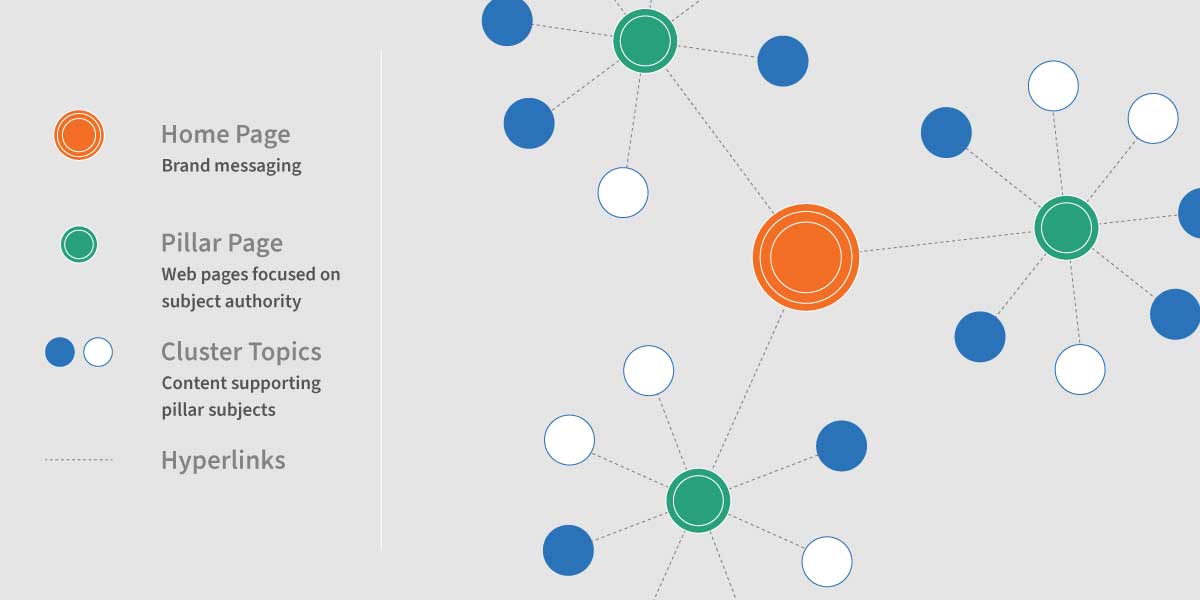These days, businesses are looking for ways to make the most of their marketing efforts. Resources are slimmer, customer spending is cautiously restrained, and companies are looking for ways to remain competitive on tighter budgets. Thinking of marketing as an expense, rather than as an investment can be a costly mistake. Instead, it’s important to focus on getting the most out of your current budget by optimizing your efforts and tapping into solutions that produce results.
To help you make the most of your marketing budget and get maximum results, here are 6 ways to elevate your B2B marketing game:
1. Create Compelling Content
Content marketing remains a cornerstone of B2B marketing success, even on a tight budget. Develop high-quality and valuable content that addresses the pain points and challenges of your target audience. Focus on creating blog articles, whitepapers, case studies, and infographics that showcase your expertise and provide solutions. Repurpose and share this content across multiple channels to maximize its reach and impact. Take advantage of AI tools to create content more efficiently and effectively.
Some benefits of good marketing content include:
-
- Increased brand awareness by allowing your business to demonstrate its expertise and thought leadership, expanding their reach and visibility in the industry.
- Improved lead generation by attracting potential clients and driving interest in products or services.
- Building credibility by establishing trust with prospects that positions your business as a reliable and knowledgeable authority in your field.
- Improved customer engagement by keeping existing clients engaged, fostering loyalty, and encouraging repeat business.
- Enhanced conversion rates by addressing pain points and providing valuable solutions to your buyers.
2. Invest in Better Customer Relationship Management Technology (CRM)
A comprehensive CRM system is a must-have when it comes to optimizing B2B marketing efforts. It allows your business to track interactions with prospects, appropriately segment customers, and measure metrics that’ll help you fine-tune your campaigns for better returns. When used well, a CRM will enable you to improve your customer experience (CX), increase customer lifetime value, raise retention, and drive referrals. Bynder Group helps many clients implement HubSpot CRM as a powerful tool for managing their customer data. For smaller businesses, options such as Monday or Keap may be good choices. If you think you don’t need a “real” CRM, you’re mistaken. Investing in a CRM system will pay for itself many times over.
Some benefits of investing in a better CRM include:
-
- Access to a centralized database ensures that your team can access real-time, accurate data, for more informed decisions.
- Enhanced lead management allows your company to track leads through your entire sales funnel.
- Improved customer segmentation enables your business to target marketing efforts more precisely
- Enhanced collaboration among marketing, sales, and customer support allows teams to work cohesively, share feedback, and align strategies.
- Performance tracking and analytics can identify what works and what doesn’t, enabling your company to make data-driven decisions and improve marketing strategies.
3. Leverage Social Media Channels
Social media platforms offer a cost-effective way to engage with your B2B audience. Identify the platforms where your target audience is most active and establish a strong presence there. Share relevant content, industry insights, and thought leadership to build credibility. Engage in meaningful conversations, participate in relevant industry groups, and leverage cost-efficient social media advertising options to reach a wider audience.
Some benefits of leveraging social media for B2B marketing include:
-
- Expanded reach allows your business to reach a larger audience, including potential clients, industry influencers, and decision-makers.
- Enhanced brand visibility and recognition among your target audience.
- Relationship building promotes customer loyalty and satisfaction.
- Generate leads through social media by promoting valuable content, running targeted ads, and engaging with your prospects.
- Conduct market research for valuable insights into customer preferences, industry trends, and competitor activities.
4. Execute Effective Email Marketing Campaigns
Email marketing remains one of the most effective strategies for nurturing leads and driving conversions. Build an opt-in email list and craft personalized email campaigns that provide value to your recipients. Automate email sequences to deliver targeted content at the right time, guiding prospects through the sales funnel. Monitor and analyze campaign performance to optimize your email strategy continually. Remember, the quality of your email marketing matters, too. Adhere to best practices to optimize your email for the highest deliverability, open rates, and click-through rates. If you’re not familiar with email marketing best practices, rely on experts like us to build a strategy and train your team.
Some benefits of email marketing include:
-
- Targeted communications allow you to send personalized and targeted messages to specific segments of your audience, increasing relevance and engagement.
- Lead nurturing at various stages of the sales funnel to move prospects closer to conversion.
- Strengthen relationships with existing and potential clients, fostering trust and loyalty.
- Cost-effective strategy compared to traditional advertising, offering high returns on investment (ROI) when executed efficiently.
- Detailed analytics allow your business to track open rates, click-through rates, and other metrics to measure the effectiveness of campaigns.
- Drive website traffic to your company’s website or specific landing pages.
- Time-sensitive offers, promotions, and product launches create a sense of urgency among recipients.
- Integration with CRM systems allows seamless data sharing and more streamlined lead management and customer interactions.
5. Embrace Marketing Automation
Marketing automation tools can streamline your B2B marketing efforts and maximize efficiency, even on a tight budget. Invest in affordable automation solutions that enable you to automate repetitive tasks, nurture leads, and track campaign performance. Use data-driven insights to optimize your marketing strategies continually. Automation empowers you to do more with limited resources, allowing you to focus on strategic initiatives that drive results.
Some benefits of marketing automation include:
-
- Lead nurturing processes enable your business to track, score, and prioritize leads.
- Personalization at scale to individual leads and customers, fostering stronger connections.
- Enhanced efficiency by reducing manual tasks, saving time and resources.
- Multi-channel campaigns across various channels, including email, social media, and website, ensuring consistent messaging and branding.
- Lead segmentation based on specific criteria, enabling targeted marketing efforts tailored to each segment’s unique needs.
- Data-driven insights to optimize marketing strategies and improve ROI.
- Improved sales and marketing alignment, enhancing collaboration and lead handover processes.
- Automated lead scoring helps your sales team prioritize and focus.
- Customer retention and upselling for maximizing customer lifetime value and fostering brand loyalty.
6. Engage Agency Expertise
Outsourcing to a marketing agency will help you stretch your budget further. A reputable agency can provide the expertise and experience that you may not have in-house, allowing you to make up for any gaps without breaking the bank. When outsourcing, be sure to look for an experienced B2B marketing agency with a proven track record of success. Leverage agency experience for outsourcing all of your marketing, augment your existing in-house team, or provide strategy and/or training.
Some benefits of working with an agency for marketing include:
-
- Access to specialized expertise for strategy, tactics, technology, and resources.
- Cost-effectiveness by eliminating the need for increased overhead costs.
- Access to advanced marketing tools, technologies, and resources that may be otherwise unknown or inaccessible.
- Scalability based on business needs, accommodating changes in demand or strategy.
- Fresh perspectives and creative ideas, challenging the status quo and introducing innovative marketing approaches.
- Time efficiency by allowing you to focus on core operations while leaving marketing responsibilities in the hands of experts.
- Tried-and-tested strategies, reducing the risk of trial and error and ensuring more effective campaigns.
- Providing valuable cross-industry insights and best practices.
- Flexibility by adapting quickly to market changes and trends, ensuring that marketing efforts remain relevant and impactful.
Stay Creative and Strategic
Remember, success in B2B marketing is not solely determined by the size of your budget, but by the creativity, strategic thinking, and execution of your marketing initiatives. By implementing these six powerful strategies, you can achieve remarkable results, increase brand visibility, and drive meaningful business growth, even when resources are limited.












